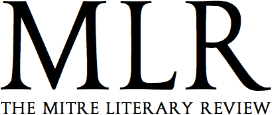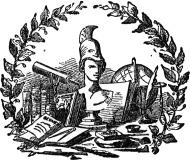All That is Seen and Unseen
The Novels of Dame Muriel Spark
Dame Muriel herself is the major obstacle to reading her work. It is difficult not to become emotionally involved in the author, either with her narratorial voice, or with semi-autobiographical characters which portray Spark at various points in her life. The moral fluidity of Fleur Talbot in Loitering With Intent can depress a reader, especially a male one, into hating the character and, by extension, the author, with disastrous consequences if one wishes to continue reading her work. The feeling with Fleur when she justifies adultery or theft is like that of a child discovering that their parents or priest are imperfect. Spark is very much a deity in the world of her novels.
Having said this, Dame Muriel’s novels are so rich and deep with the highs and lows of humanity that one must be brave if one is to experience the works of a lady who, I am convinced, will be seen as one of the great English language prose writers of the twentieth century. Dame Muriel was born in Edinburgh of a Jewish father and Presbyterian mother, attended a Church of Scotland (hurrah!) school, and became a Roman Catholic. She lived in Edinburgh, Rhodesia, London, and now Tuscany. She has been a poet, editor, mother, and a second world war intelligence officer. All this is encapsulated in her novels.
Yet she is not an author who needs to pander to contemporary literary needs (rough sex, heroine spikes, poverty). She writes what she knows in a style which feels timeless. It is sometimes jarring to hear her describe the internet, for example. Indeed it is important to note that she started writing novels in 1958 when she was thirty-nine. Having lived through a failed marriage, childbirth, war, a mental breakdown, a conversion through the works of Cardinal Newman to Roman Catholicism, she was in a position to write novels of experience and authority, as well as a tender beauty, born out of suffering. She is still writing.
To be some help to the reader who is interested in Spark’s novels, I will suggest three very different novels of hers to start on, according to taste, none of which are The Prime of Miss Jean Brodie, classic though it is:
The Public Image is one of Spark’s darker novels, curiously foreshadowing the explosion is the cult of the celebrity and the paparazzi phenomenon. Annabel Christopher is the latest hot British film star, with a writer husband and a head for PR. She cannot act. Yet Spark seems sympathetic to her major talent: she is the English tiger-lady, very much like Rosamund Pike’s role in “Die Another Day”. She is the beautiful, cultivated English mother, sophisticated and proper. Yet behind her wide eyes and away from the cameras she is an insatiable tiger in the bedroom. In real life Annabel Christopher is a pretty girl who got lucky and has very little time for sex, let alone insatiable tiger sex. The sympathy comes from her portrayal as a male fantasy. Her ruthless calculations in dealing with her husband’s suicide reveal her real inner strength. Although definitely not a feminist, Spark here creates a novel which is very scathing in its social implications, yet gripping and readable as any popular novel.
For a lighter read, try Aiding and Abetting. This 2000 novel deals with Lord Lucan, supposing that he is still alive and seeking therapy. Except that in Spark’s world, there are two Lucans, each trying to prove that they are genuine. The therapist herself is a fake stigmatic, who made a fortune fooling the masses, and now has her own disturbing method of psychoanalysis. Much is made of Spark as a Catholic novelist, yet I think that this is a part of her work as much as any other part of her life is part of her work. Her perspective on the Church of Rome is, however, very interesting and is certainly something to think about when reading her novels. Aiding and Abetting has many examples of Spark giving clues to the reader, only to take the solution away from them until she feels that she should reveal it. It is this teasing aspect to her novels which is so seductive. One can read this as a top quality detective novel.
Finally, I would suggest reading The Girls of Slender Means. Set in a second world war hostel for young ladies, Dame Muriel creates a novel which reflects humanity through the lens of these young girls working in London. Nicholas Farringdon has ambitions to explore the girls intimately, and ends of making them his idealised conception of society. His is trying to write a philosophical treatise among the chattering of debutantes and secretaries. This novel does contain examples of Spark’s wicked and wonderful humour, she as the chatter of the upper-class Dorothy Markham: ‘He actually raped her, she was amazed… Filthy luck, I’m preggers. Come to the wedding!’. There is always an ironic edge to Spark’s work, which will frequently have one laughing out loud.
I do hope you will begin to read the novels of Dame Muriel Spark as they are such a treasure to the English language that it is sad to think of them languishing on bookshelves in need of a good home. There is always more to her than meets the eye.



